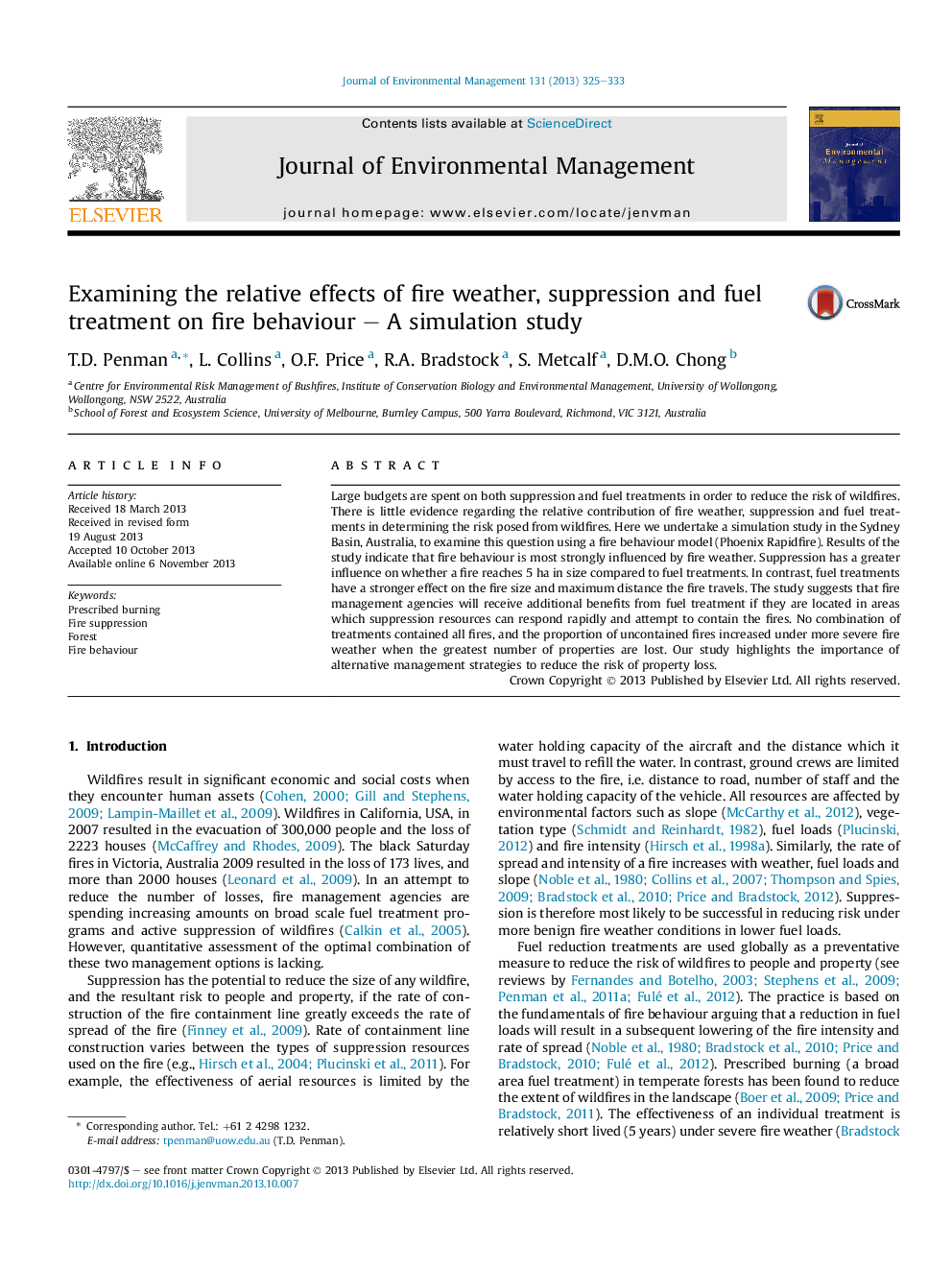| Article ID | Journal | Published Year | Pages | File Type |
|---|---|---|---|---|
| 1055960 | Journal of Environmental Management | 2013 | 9 Pages |
•Fire weather has the greatest effect on containment, size and distance travelled.•Suppression has a stronger effect in the initial attack phase.•Fuel treatment has a greater effect on fire size and distance travelled.•Fires impacts assets in weather when management treatments are less effective.
Large budgets are spent on both suppression and fuel treatments in order to reduce the risk of wildfires. There is little evidence regarding the relative contribution of fire weather, suppression and fuel treatments in determining the risk posed from wildfires. Here we undertake a simulation study in the Sydney Basin, Australia, to examine this question using a fire behaviour model (Phoenix Rapidfire). Results of the study indicate that fire behaviour is most strongly influenced by fire weather. Suppression has a greater influence on whether a fire reaches 5 ha in size compared to fuel treatments. In contrast, fuel treatments have a stronger effect on the fire size and maximum distance the fire travels. The study suggests that fire management agencies will receive additional benefits from fuel treatment if they are located in areas which suppression resources can respond rapidly and attempt to contain the fires. No combination of treatments contained all fires, and the proportion of uncontained fires increased under more severe fire weather when the greatest number of properties are lost. Our study highlights the importance of alternative management strategies to reduce the risk of property loss.
